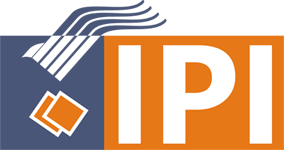LEARNING ANXIETY IN SPEAKING ACTIVITIES AMONG SENIOR HIGH SCHOOL
Keywords:
Learning Style, Learning Motivation, Mathematics Learning Results.Abstract
In Anxiety in speaking English remains a major obstacle for high school students in the learning process. This study aims to describe the level and type of speaking anxiety experienced by students in the context of English language learning. This study employs a descriptive quantitative approach involving 100 eleventh-grade students at SMAN 1 Asembagus. The instrument used is the Foreign Language Classroom Anxiety Scale (FLCAS), which has been validated and analysed using SPSS version 27. The results indicate that 40% of students are at a low level of anxiety, 55% at a moderate level, and 5% at a high level. The most dominant aspect of anxiety was communication apprehension with an average score of 25.50, followed by fear of negative evaluation (23.22), and test anxiety (12.31). These findings indicate that most students feel anxious when they have to speak spontaneously in English. Therefore, teaching strategies that support and create a comfortable classroom environment are needed to help students feel more confident in speaking English.References
Ary, D., Jacobs, L. C., Sorensen, C., & Walker, D. A. (2014). Introduction to Research in Education (9th ed.). Cengage Learning.
Bandura, A. (1997). Self-Efficacy: The Exercise of Control. W. H. Freeman.
Brown, H. D. (1994). Teaching by Principles: An Interactive Approach to Language Pedagogy. Prentice Hall Regents.
Dewaele, J.-M., & MacIntyre, P. D. (2014). The two faces of Janus? Anxiety and pleasure in the foreign language classroom. Studies in Second Language Learning and Teaching, 237-274.
Dewi, R. S. (2019). Reducing Students’ Speaking Anxiety through Role-Play and Drama Techniques. Journal of English Language Teaching, 45–52.
Horwitz, E. K., Horwitz, M. B., & Cope, J. A. (1986). Foreign Language Classroom Anxiety Scale (FLCAS). The Modern Language Journal, 125-132.
Horwitz, E. K. (2016). Factor structure of the foreign language classroom anxiety scale: A comment on Park (2014). Psychological Reports, 71-76.
Iskandarwassid, & Sunendar, D. (2010). Strategi Pembelajaran Bahasa. Remaja Rosdakarya.
Krashen, S. D. (1982). Second Language Acquisition and Second Language Learning. Pergamon Press.
Liu, M., & Jackson, J. (2008). An exploration of Chinese EFL learners' reluctance to communicate and foreign language anxiety. The Modern Language Journal, 71-86.
MacIntyre, P. D., & Gardner, R. C. (1991). Methods and results in the study of anxiety and language learning: A review of the literature. Language Learning, 85-117.
Mirani, A. N., Rachmawati, D., & Setiawan, A. (2021). The Effect of Self-Confidence on Students' Speaking Anxiety in EFL Classroom. Indonesian Journal of Applied Linguistics, 299-310.
Nuradilla, N. (2023). Exploring Speaking Anxiety Among Indonesian EFL Learners: Causes and Effects on Learning Outcomes. Journal of English Language Studies, 45-60.
Park, G.-P. (2014). Factor analysis of the foreign language classroom anxiety scale in learners of English as a foreign language in Korea. Psychological Reports, 261-275.
Putri, A. D., & Kurniawan, B. (2021). Game-Based Learning to Reduce Students’ Speaking Anxiety in EFL Classroom. Jurnal Pendidikan Bahasa Inggris, 78–86.
Tallon, M. (2009). Foreign language anxiety and native Spanish-speaking students: A quantitative study. Foreign Language Annals, 112-137.
Utami, L. P., & Nurjati, N. (2017). Students' Motivation and Anxiety in Learning English Speaking Skill: A Case Study at Senior High School Level. Journal of Language and Education, 78-92.
Wijaya, Y. (2023). Strategies to Overcome Foreign Language Speaking Anxiety in Indonesian EFL Learning Context. International Journal of Language Education, 112-130.









